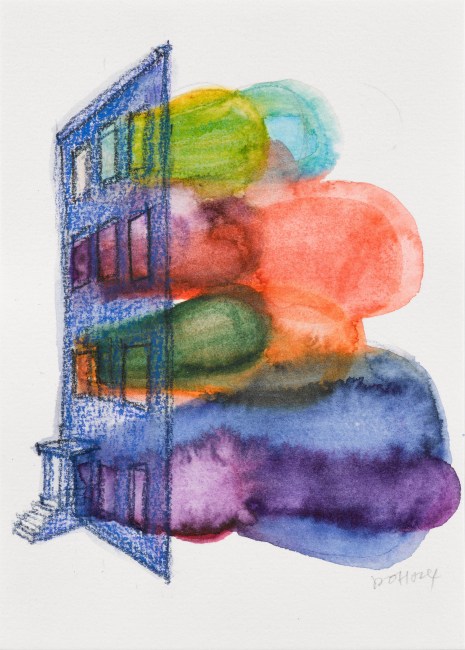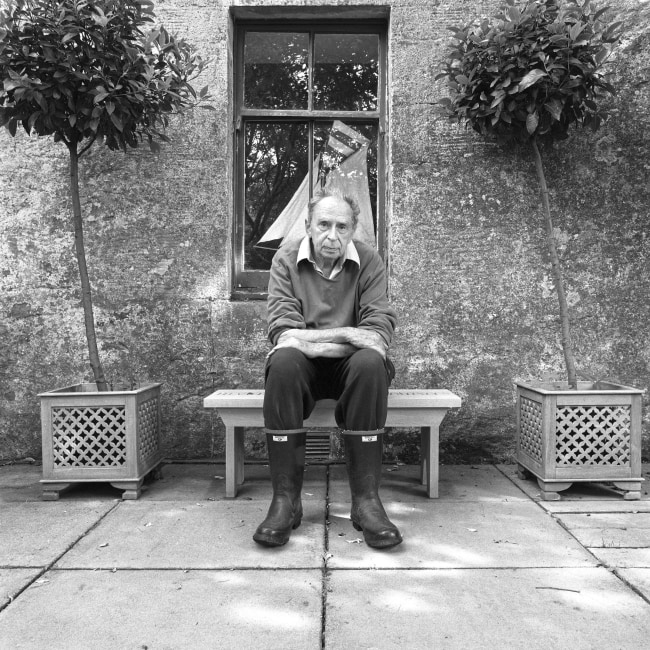Adriana Varejão
Adriana Varejão
Adriana Varejão fills the Lower Gallery with a monumental wall based installation, Macau Wall, while the Upper Gallery houses new individual floor and wall based work. The fine colour gradations that enliven the apparent chromatic uniformity of Varejão's recent painting evoke the traditions of Minimalism or monochrome painting. However, her work is not a strict exercise in abstract painting, but rather a representation of a surface clad in tiles.
Throughout her work Varejão has pursued a common pattern of research, examining the complex history of Brazil. The rich Baroque imagery of her earlier work replicated techniques for making such things as porcelain, tiles and tattoos, all of which were imported to Brazil from other cultures. Varejão is also fascinated by old methods of medical treatment and often in her work the canvas ruptures or is cut to expose a bodily interior of fleshy sculptural elements.
"My fiction does not belong to any time or place, instead it is characterized by themes dealing with rupture and discontinuity. These are stories about the body, about medicine, about painting, about Brazil, about tattoos, about Ming, Song or Iznik ceramics, about old tiles, either Portuguese or Delft, and also about modern and ordinary tiles, about maps, books, lacquers. Everything is contaminated. In my work, the formation of Brazilian culture from the colonial period onwards is used as a metaphor for the modern world. The works included in the "jerked-beef" series are like contemporary ruins, canvases of wall and rubble that end up losing their stony, insensitive, hard and inhuman nature and become flesh."
Selected Images
Related
-
![]() Exhibition
Posted
April 11 2025
Exhibition
Posted
April 11 2025
Paula Rego and Adriana Varejão: Between Your Teeth at the Calouste Gulbenkian Museum, Lisbon
On view 11 April–22 September 2025, this major exhibition brings together some 100 works to highlight the connecting threads between the two artists, with particular focus on the history of women in different geographies, opening up a vast thematic spectrum through which to reflect on the present. Lisbon, Portugal -
![]() Interview
Posted
April 4 2025
Interview
Posted
April 4 2025
Adriana Varejão speaks to the Financial Times about new exhibition that connects her work to Paula Rego’s
'Paula plays psychological games with her work, they have this subtle tension. The violence in my work is not so subliminal.' Oliver Basciano, Financial Times -
![]() Exhibition
Posted
March 6 2025
Exhibition
Posted
March 6 2025
Adriana Varejão at the Hispanic Society Museum & Library, New York
On view 27 March–22 June 2025, the exhibition features new paintings from Varejão’s acclaimed Plate series and a site-specific outdoor sculptural intervention. Hispanic Society Museum & Library, New York -
![]() Exhibition
Posted
March 26 2022
Exhibition
Posted
March 26 2022
Adriana Varejão: Sutures, Fissures, Ruins at Pinacoteca de São Paulo
This retrospective (26 March–1 August 2022) is one of the most comprehensive exhibitions ever held of Varejão’s work, bringing together for the first time a significant group of more than 60 works produced from 1985 to 2022. Pinacoteca de São Paulo -
![]() Exhibition
Posted
January 19 2020
Exhibition
Posted
January 19 2020
Now open – An Exhibition of Works by… featuring Adriana Varejão at Witte de With, Rotterdam
Taking blue and white ceramics as a starting point, this exhibition (19 January–19 July 2020) of international artists explores the migration of form. A conversation with the artist takes place on Saturday 25 January 2020. Witte de With Center for Contemporary Art, Rotterdam -
![]() Exhibition
Posted
November 29 2019
Exhibition
Posted
November 29 2019
Interiorities, featuring Njideka Akunyili Crosby and Adriana Varejão, at Haus der Kunst, Munich
The exhibition (29 November 2019–29 March 2020) focuses on interior of the imagination, as well as with the interior as a real setting, as a private retreat or shelter, or as a space with the potential to reflect and change the social and political zeitgeist. Haus der Kunst, Munich -
![]() Exhibition
Posted
August 20 2019
Exhibition
Posted
August 20 2019
Adriana Varejão: Otros cuerpos detrás at Museo Tamayo
A monographic exhibition (24 August–10 November 2019) exploring the lines of research that the Brazilian artist has developed in her artistic practice since the 1990s. Museo Tamayo, Mexico City -
![]() Exhibition
Posted
June 28 2019
Exhibition
Posted
June 28 2019
Adriana Varejão: Por uma retórica canibal at MAMAM, Recife, Brazil
Curated by Luisa Duarte, this major exhibition (28 June–8 September 2019) features works created from the early 1990s to present. Recife, Brazil -
![]() Exhibition
Posted
April 17 2019
Exhibition
Posted
April 17 2019
Adriana Varejão: Por uma retórica canibal at the Museum of Modern Art, Salvador
Curated by Luisa Duarte, this major exhibition (17 April–15 June 2019) features works created from the early 1990s to present, with an emphasis on the city of Salvador, Bahia, Brazil's rich cultural history, and its many references in the artist's work. Salvador, Bahia, Brazil -
![]() Exhibition
Posted
December 8 2016
Exhibition
Posted
December 8 2016
Adriana Varejão featured in the Whitechapel Gallery's Terrains of the Body: Photography from the National Museum of Women in the Arts
Drawn from the National Museum of Women in the Arts (Washington, U.S.), this collection display (18 January - 16 April 2017) showcases photography and video work by seventeen contemporary artists from around the world. Whitechapel Gallery, London -
![]() Commission
Posted
August 6 2016
Commission
Posted
August 6 2016
Adriana Varejão's Olympic Aquatic Stadium commission for Rio 2016 is unveiled
The Brazilian artist has created a new commission for the exterior of the Olympic Aquatic Stadium for Rio 2016, which will be on view during the Olympic and Paralympic games (6-20 August and 8-17 September 2016). Olympic Aquatic Stadium, Rio de Janiero -
![]() Exhibition
Posted
July 2 2016
Exhibition
Posted
July 2 2016
Adriana Varejão in The Great Animal Orchestra at Fondation Cartier
Inspired by the work of American musician and bioacoustician Bernie Krause, this exhibition (until 8 January 2017) at the Fondation Cartier pour l'art contemporain, which brings together artists from all over the world, invites its audience to immerse themselves in an aesthetic meditation, both aural and visual, on an animal kingdom that is increasingly under threat. Featuring Passarinhos, a new outdoor installation by Adriana Varejão. Fondation Cartier pour l’art contemporain, Paris -
![]() Gallery Exhibition
6 June - 2 August 2014
Gallery Exhibition
6 June - 2 August 2014
Adriana Varejão: Carnivorous
The artist's fifth solo presentation with Victoria Miro and her first in the Mayfair gallery. One of the most original voices in contemporary Brazilian art, Varejão's diverse practice comprises painting,... Victoria Miro Mayfair -
![]() Gallery Exhibition
16 October - 9 November 2013
Gallery Exhibition
16 October - 9 November 2013
Adriana Varejão: Polvo
A new body of work by the artist, in her fourth solo presentation at the gallery. One of the most original voices in contemporary Brazilian art, Varejão's diverse practice comprises... Victoria Miro Gallery II -
![]() Gallery Exhibition
7 September - 1 October 2011
Gallery Exhibition
7 September - 1 October 2011
Adriana Varejão
Victoria Miro is delighted to present a new body of work by Adriana Varejão in her third solo presentation at the gallery and her first show in London since 2004.... Victoria Miro Gallery II -
![]() Gallery Exhibition
14 September - 9 October 2004
Gallery Exhibition
14 September - 9 October 2004
Adriana Varejão: Saunas
In the Sauna paintings, Varejão explores questions inherent to painting and geometry, with a sensitive use of light and shade to represent simple, contemporary tiled interiors that the artist describes... Victoria Miro Gallery I





















